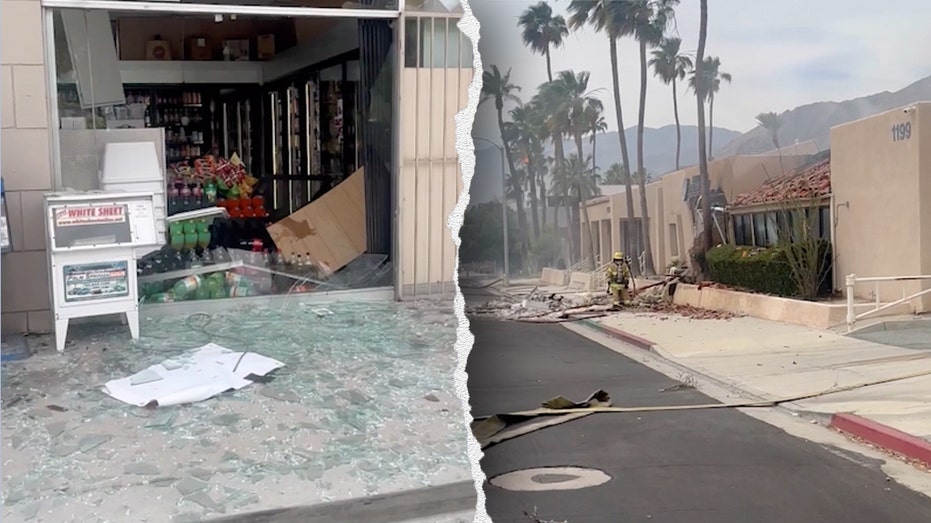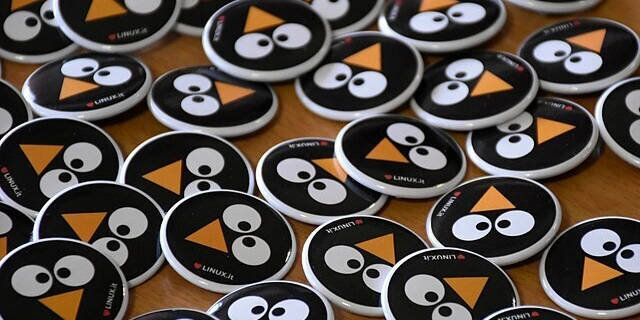A wild project in Iceland could transform how we forecast volcanic eruptions
When you picture a volcano, what do you see? I personally imagine a mountain sticking up into the sky. At the top of that mountain, I see a crater with a fiery hot lake boiling and roiling in it, or lava pouring down a slope like bright red candle wax, or massive clouds of grey […]


When you picture a volcano, what do you see? I personally imagine a mountain sticking up into the sky. At the top of that mountain, I see a crater with a fiery hot lake boiling and roiling in it, or lava pouring down a slope like bright red candle wax, or massive clouds of grey ash exploding into the air.
It’s all incredible, powerful imagery, but it’s also really just the tip of the volcano-berg.
If I were to descend down through my imaginary volcano, moving down through layers and layers of earth, I’d find what might be an even more incredible feature: my volcano’s pulsing, fiery furnace of a heart, also known as its “magma chamber.” This is the reason that hot ash comes bursting up through the surface. It’s the original source of my lava and my crater lake. It’s where much of the important action in a volcano unfolds — and could hold secrets to help us better predict when a devastating eruption will occur.
The problem is that we know much less about magma chambers like this than we’d like to. We’re not even good at depicting them.
“We draw them as red balloons,” says Mike Poland, a geophysicist and scientist-in-charge at the Yellowstone Volcano Observatory. “They are not. But it’s a very difficult thing to represent.”
Magma chambers are so hard to represent because they’re so complex. They can be thousands of degrees Fahrenheit and have blends of solid material and hot liquid rock. These chambers have different temperatures in different spots, and different minerals melting at different heats or moving around in different ways. And, making things even more complex, there’s a multitude of different gases that might make pressure build up before an eruption.
But if we could better represent magma chambers — and just generally better understand exactly how they work — Poland says we might be able to dramatically improve our understanding of how volcanoes operate, and therefore be better able to anticipate what to expect from an impending eruption. But right now, because these chambers are so hot and so deep underground, it’s hard to plumb their secrets.
“We don’t have, like, the glass-bottomed volcano where you can just sort of look into and go like, Oh, that’s what’s going on,” Poland jokes.
But what if we could have a glass-bottomed volcano that we could sort of look into and go like, Oh, that’s what’s going on? What if we could build, say, a little observatory deep down under the ground, right in the hot little heart of a volcano? It sounds absurd, and yet…
“ There’s a project in Iceland,” Poland tells me, “They want to build a magma observatory. They want to drill into a magma chamber and put some monitoring equipment in the hole. … That would give us some idea of what’s going on in there.”
The project is called the Krafla Magma Testbed, or KMT, and the researchers working on it think it could revolutionize volcanology — and how we forecast eruptions.
But first, what’s missing from our volcano forecasts?
One of the key motivations for building an observatory like this is that volcanology has a prediction problem. On the one hand, volcanoes are much more predictable than, say, earthquakes — they tend to give us some warning signs before they erupt. But on the other hand, it’s hard to perfectly interpret those warning signs, which means the predictions volcanologists can make with our existing technology can be both incredibly helpful and frustratingly imprecise.
For example, for the last year or so, a potential eruption has been brewing at Mount Spurr, a volcano near Anchorage, Alaska. Twice in the last 100 years, eruptions from Mount Spurr have rained ash down on the city, clogging up roadways, shutting down the local airport (one of the busiest cargo ports in the world), and settling like a fine dusting of gritty, gray, unmelting snow on cars and lawns and leaves of trees.
People are understandably worried about a repeat performance, and the Alaska Volcano Observatory is monitoring the situation closely.
Matt Haney, the scientist-in-charge at that observatory, told me while he can be sure that the volcano is displaying several key warning signs, he can’t be sure exactly what the upcoming volcanic activity might look like — if there will be one eruption or many, exactly how intense they will be, or when they’ll occur.
“That is not possible in the current levels of technology that we have,” he said. “There’s no definitive time frame, like, Oh, it’s going to do exactly this, like it did in 1992. It’s not the precise same playbook.”
Even with 11 seismic stations gathering real-time data about the Alaskan volcano — even with devices measuring how it is changing shape in response to incoming magma, with planes circling in the sky to understand the venting of gases, and with an enormous amount of truly impressive work — these volcanologists still can’t give us as clear a picture of the future as we might like them to.
That’s tricky enough when you’re dealing with the prospect of a clogging and choking coating of volcanic ash, but it gets even more complicated when you’re trying to make determinations about people’s lives.
“This is the problem. How do you know how big an eruption’s going to be?”Mike Poland, geophysicist and scientist-in-charge at the Yellowstone Volcano Observatory
Look, for example, at the case of Soufrière de Guadeloupe, a volcano on the Caribbean island of Basse-Terre. In the mid-1970s, it started venting steam. That, paired with increased earthquake activity, had people worried that a dramatic eruption might be brewing.
And they had very good reason to worry: In 1902, another Caribbean volcano eruption sent a deadly mix of hot gas and ash and rock careening through a nearby city at 300 miles an hour, killing 27,000 people. So, hoping to avoid a repeat of this devastating event, the governmental authorities decided to go ahead and evacuate. More than 70,000 people left Basse-Terre.
But the subsequent eruption was minor. As one report put it, the “explosive emission of steam and debris was certainly impressive to those who had the misfortune to view it at close quarters. But from a volcanological point of view, it represented a rather trivial outburst.” If anything, the biggest impact on the volcanic activity was the evacuation itself — it hurt the local economy and disrupted kids’ schooling.
Sometimes, though, evacuations are extremely necessary. In 1991, at Mount Pinatubo in the Philippines, volcanologists once again read the volcanic tea leaves — stuff like seismic activity and steam explosions — and predicted a big eruption. Once again, people were evacuated. But this time, the decision to abandon the area saved thousands of lives — the ensuing eruption was one of the biggest in the 20th century.
“This is the problem,” Poland says. “How do you know how big an eruption’s going to be?”
You don’t want to evacuate too little, or too late, at the cost of human lives, he says. But equally, you don’t want to be the boy who cries wolf, or the volcanologist who cries, “ERUPTION!”
“ It erodes trust in the scientists,” he says.
Volcanology has come a long way since the 1970s, or even the 1990s. Scientists have much more monitoring equipment set up on volcanoes, and they have made better equipment over time. Their ability to make predictions about volcanoes has improved dramatically as a result.
But as the case of Mount Spurr shows, even now — in 2025 — the field still grapples with the same fundamental problem of precision in their predictions.
So how do these predictions get better? How could volcanologists further improve their predictions in order to help people make decisions about how to prepare for eruptions?
Poland has spent a fair amount of time thinking about the answers to this question. He wrote a whole paper about it, in fact. And he thinks that improving volcano forecasting is not just about continuing to improve our monitoring equipment. Instead, he says, what we really need is better information about volcanoes themselves, and the hot molten rocks that power them.
What can molten rock teach us about eruptions?
Let’s talk about how we currently forecast volcano eruptions. A lot of volcano prediction involves making very informed guesses about what a volcano might do in the future based on what that volcano has done in the past — what Poland calls pattern recognition.
Take, for example, gas emissions or earthquakes. Essentially, he says, researchers will take a lot of very, very precise measurements of those phenomena that will allow them to then say ‘Alright. X is happening. And when X happened before, Y happened afterward, so maybe now Y will happen again soon.’
“It’s not necessarily based on any special understanding of the physics of volcanic activity or that particular volcano,” Poland says, “It’s more based on…We’ve seen this movie before, and we know how it’s likely to evolve over time.”
This approach has been incredibly useful. It’s saved a lot of lives and helped scientists make some really good predictions about how a volcano might behave, broadly. But Poland likes to draw a comparison between this approach and with how we forecast the weather. Because in the past, weather scientists also relied heavily on pattern matching. If the pressure was dropping and it was getting colder, say, they might expect a storm to come through.
But then, weather forecasting went through a kind of revolution. Scientists used satellites and other instruments to collect information about clouds and winds and rain. They collected huge amounts of data about the atmosphere, and people even flew directly into the eyes of phenomena like hurricanes to measure what was happening inside of those storms.
“This really abundant information was then used by modelers…to work out the physics of what’s going on,” Poland says.
Weather scientists still use a lot of historical data to inform their understanding of the future (and now, with AI, are actually turning back to their massive bodies of data to try some more advanced pattern recognition), but they have also built really sophisticated models of the physics of the atmosphere that help them make their predictions. And it has paid off: Last year, according to the National Hurricane Center, hurricane forecasters set new records for accuracy in their predictions for the 2024 Atlantic hurricane season.
“We can now forecast, with some degree of accuracy, whether a hurricane will form, how intense it is going to be, where it’s going to go,” Poland says. “Obviously not every forecast is perfect. And that’s because our knowledge is still imperfect. But they know enough.”
Poland wants volcanologists to build similar models of the underlying physics of volcanoes, which would mean building models of magma chambers. Scientists have been working on making models like this — and have even been working on applying them to forecasting. But if the weather scientists built their models by flying directly into things like hurricanes and taking measurements, volcano researchers have had a bit of a harder time doing the equivalent for magma chambers. They can’t take direct measurements, so they’ve used seismic and electromagnetic imaging to take the equivalent of X-rays of the Earth, and they’ve studied places where ancient volcanoes have eroded away, bringing their cooled, frozen magma chambers up to the surface. They’ve even read the layers of volcanic crystals as though they were tree rings.
This has been helpful, but it’s kind of like studying your neighbors by eavesdropping on their conversations through the wall and going through their trash instead of just talking to them directly.
So that’s why some researchers are hoping to talk to volcanoes directly — to observe their magma chambers in real time.

Introducing KMT: The Krafla Magma Testbed
In some ways, the dream of a magma observatory started with an accident. Or to be a little more specific, it started with three different accidents in three different countries, each more than a decade ago. In each case, people set out to drill a deep hole into the rock near a volcano, and in each case, they accidentally drilled right down into the magma chamber.
These accidents were a big surprise to the people doing the drilling, but to John Eichelberger, they were a big opportunity.
Eichelberger has been studying volcanoes for around five decades. For much of that time, he’s been curious about magma chambers. He thinks that knowing more about them could not only help us forecast volcanoes better, but also maybe tap into them for geothermal power. Unfortunately, he says, for a long time, it was difficult to find a way to drill into magma chambers and find out more about them, because people were not sure what would happen if you did. What if you triggered an eruption?
“Really the only way [drilling down to a magma chamber] could happen was by serendipity,” Eichelberger says.
Serendipity like these three drilling accidents. They provided some real-world examples of what would happen if you drilled down to a magma chamber. And the answer was, it turns out, not all that much. In each of these three cases, the drilling companies hit the magma chamber and instead of like hot rock shooting out of their hole in a hot plume of fire, the magma basically climbed a little ways up the hole, and then cooled off into a plug of dark obsidian glass.
This was very good news for Eichelberger. As he remembers it, he wound up meeting someone from a power company that was involved in one of these accidents. That representative let him know that they would be open to letting Eichelberger and other researchers do some more research near their power plant in the Krafla volcanic region of Iceland. And so, in 2014, Eichelberger gathered researchers together for a consortium – including a researcher named Yan Lavallée, now at Ludwig Maximilian University of Munich.
“Fifty or 60 of us spent the best part of a week together browsing ideas as to…what could we learn if we were to do this?” Lavallée syas, “What could we learn if we were to drill back in the magma?”
This was the start of the dream of KMT: The Krafla Magma Testbed, named for the volcanic system in Iceland. It’s a dream that Eichelberger, Lavallée, and their collaborators are still trying to get funded, but they have a clear idea of how they’d make it a reality.
“First, we’re going to install a drill rig at the Earth’s surface, and we’re going to start drilling,” Lavallée tells me.
As they drill down, things will get hotter and hotter. They will pump fluid through, which will cool things down. Eventually, as they start to approach the magma of the magma chamber, the fluid will even start to cool down a little bit of that magma, too.
“It will vitrify to a glass,” Lavallée says. This glass will likely not be transparent like a window. Instead, it will be obsidian — dark black and full of minerals.
The researchers will then continue to keep things cool while they carve into that black glass, creating something like a pocket within it. Once that pocket is made, they hope to drop measuring devices into it. Lavallée works with tools in his lab that are made of the same kinds of heavy-duty materials that we put into things like jet engines and other materials that can withstand extremely high temperatures.
Once everything’s in place, they will stop cooling things down. Then the heat of the surrounding molten rock should start warming the obsidian of the glass pocket back up again slowly, until it melts back into magma and flows back around the instruments, submerging them fully in the magma of the chamber.
Then, hopefully, the researchers will finally have their observatory: a set of measuring devices feeding them real-time data about an active magma chamber.
If this first project succeeds, then Eichelberger and Lavallée are brimming with ideas for further drilling projects that could help them tease out more information about volcanoes. They both hope this research could help the world tap into volcanoes as a source of power, but also that it could help with forecasting — to help us build the models of volcanoes’ hearts that will give us the tools to predict their behavior as effectively as we predict hurricanes.
And overall, Lavallée thinks that if this dream of theirs succeeds, it might revolutionize volcanology.
“I don’t think we can really fully conceive how it’s going to change things,” he says.
Obviously, Lavallée has a clear reason to think this way, but when I asked Poland, who has no involvement with this project, what he thought, he was also pretty enthusiastic.
“I am excited to hear what they can come up with,” Poland said, “I mean, you go into a magma chamber, you’re going to learn some things.”


















































































